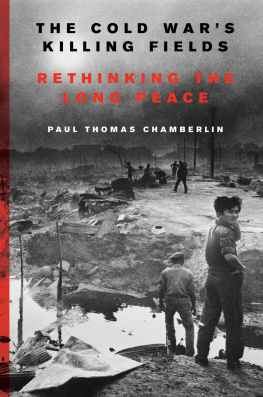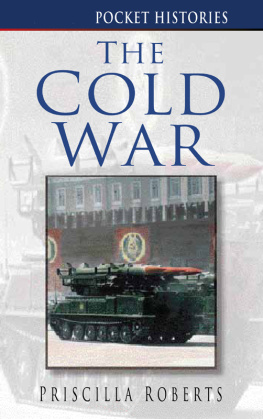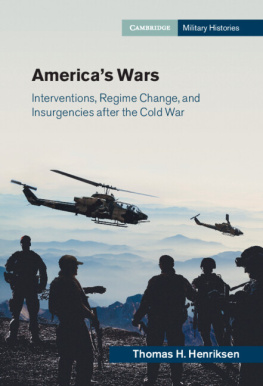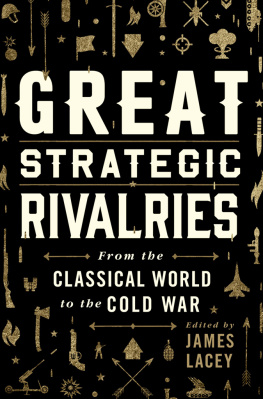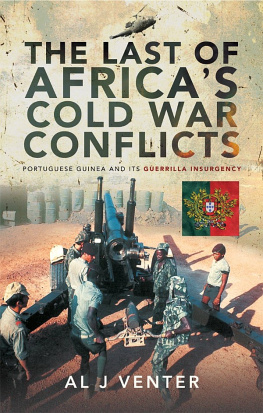This is a history of the deadliest military theater of the Cold War age. It focuses on a nearly contiguous belt of territory running from the Manchurian Plain in the east, south into Indochinas lush rain forests, and west across the arid plateaus of Central Asia and the Middle East. Seven out of every ten people killed in violent conflicts between 1945 and 1990 died inside this zone. These killing fields skirted the frontiers of the Communist world and, together with Europes Iron Curtain, formed the front lines of the Cold War. Here, along Asias southern rim, superpower armies, postcolonial states, and aspiring revolutionaries unleashed three catastrophic waves of warfare that killed more than fourteen million people. The superpowers flooded these lands with foreign aideighty cents out of every dollar Washington and Moscow sent to the Third World ended up here. Ninety-five percent of Soviet battle deaths occurred inside this stretch of territory. For every thousand American soldiers killed in combat during the period, only one died elsewhere.
The territory itself has been known by a number of names. It roughly corresponds to the overland trade routes of the ancient Silk Road and the southern borders of the Mongol Empire. In the twentieth century, geographer Nicholas Spykman would name this area the rimland. Officials in the Dwight Eisenhower administration spoke of East Asia and the Northern Tier, while Soviet officials would later make plans for the Southern and Eastern Theaters. The term southern Asia is perhaps most accurate, but it, too, risks confusion both because of its similarity to South Asia (the Indian subcontinent) and because the so-called Middle East is often treated as if it were somehow separate from Asia. For the purposes of the Cold War, this stretch of territory served as the killing fields, home to the bloodiest fighting of the post-1945 era.
Despite serving as the eras central axis of warfare, these Cold War bloodlands are not mentioned in conventional histories as a defined spacethe area has not been mapped, and many of its constituent conflicts are little more than footnotes in the story of post-1945 international relations. As a result, the global picture of Cold Warera violence remains shapeless and is all too often overlooked outside scholarly circles.
This book seeks to tell this story. It follows the course of the eras deadliest conflicts and examines how this violence shaped the Cold War and the decades that followed. The most concentrated violence of the age did not occur when or where I had expected. The killing focused on certain places and certain times, and it followed identifiable patterns. As the process of decolonization ran headlong into superpower struggles for regional dominance, the eras bloodiest battlefields traversed the southern rim of Asia. Across these Cold War bloodlands, postcolonial revolutionaries struggled to make a new world while Great Power armies launched brutal campaigns aimed at holding the line. It is a side of the Cold War age about which we know surprisingly little: a long chain of vicious conflicts fought across southern Asia to mark the transition from a world of colonies to a world of nation-states, to lay down the far frontiers of the Cold War order, and to reshape international politics.
Far from being incidental to the superpower struggle, violence played a fundamental role in shaping the contours of the U.S.-Soviet rivalry and international politics after 1945. If Latin America was Washingtons imperial workshop and Eastern Europe was Moscows laboratory of socialism, the contested borderlands of southern Asia served as the staging grounds for both superpowers containment strategies and for new modes of revolution and resistance.
While the drive to contain their rivals influence dragged Washington and Moscow into the postcolonial world, Third World revolutionaries and political leaders fought to realize their own visions of decolonization and liberation. Local forces joined the struggle along the Cold War frontiers in complex patterns of collaboration, co-optation, and resistance in bids to assert their own influence while manipulating superpower anxieties to win vital assistance for their local struggles. As they did so, regional players disrupted superpower designs and redirected the currents of international power. These postcolonial battlefields emerged as new political spaces in which superpowers, local governments, and revolutionaries refined techniques of mass violence, rewrote the politics of revolution, and reshaped the structures of world power. In the process, the battles for the Cold War borderlands forged many of the greatest geopolitical transformations of the twentieth and twenty-first centuriesthese lands witnessed the consolidation of a new system of postcolonial states, the rise and fall of Third World communism, and the emergence of a new politics of sectarian revolution.
My purpose is not to argue that the conflicts covered in this book are best understood as proxy battles of the Cold War; nor is it to suggest that the Cold War was in fact the sum total of wars in the Third World. The book does not claim to offer a full or encyclopedic account of Third World conflicts during the post-1945 era. Rather, it tells the history of the most intensely violent theater of the superpower struggle: the Cold Wars postcolonial borderlands along Asias southern tier. In doing so, it examines the bloodiest encounters of the era and considers how they shaped the course of world affairs in the second half of the twentieth century. It argues that the Cold War forged a network of connections that linked these struggles together and increased their destructive potential by an order of magnitude. Although each individual conflict may not have been a direct outgrowth of the Cold War, each was shaped in important ways by the larger structure of superpower relations during the period. While a case may be made for treating the superpower conflict separately from these conflicts along the periphery, such an approach obscures the rivalrys global impact and overlooks the influence of non-Western societies on the dynamics of the East-West struggle. Conversely, local studies that downplay the Cold War tend to gloss over global influences and place their subjects in a sort of regional vacuum. Instead, this book approaches the Cold War as a worldwide phenomenona complex, interconnected web of regional systems stretching around the world and connected to the global latticework of U.S. and Soviet power.
Although parts of this story will sound familiar to many readers, our understanding of it remains surprisingly limited. Conventional wisdom tells us that the Third World experienced violence during the Cold War, but the precise shape of that violence remains indistinct. We remember a few large wars such as Vietnam, Korea, and Afghanistan, but these accounted for less than half the eras war deaths. Beyond these better-known conflicts, we have a tendency fall back on generalizationswars took place in the Third World or in Asia, Latin America, or Africabut these are enormous regions, and only a fraction of the countries in the developing world suffered such massive bloodletting. These vague characterizations are insufficient for understanding such weighty issues.
Our understanding of post-1945 warfare remains strangely shapeless; it contains virtually no sense of scale, timing, or geography. And this lack of structure is troubling. Consider, for example, histories of World War II in Europe that gloss over the fact that the overwhelming majority of the casualties took place on the Eastern Frontthat ignore Stalingrad to focus on Normandy. Such works obscure the enormous role that the Soviet Union played in the war and lionize American contributions. Likewise, how seriously can we take a study of the Vietnam War that downplays the fact that far more Vietnamese were killed than Americans? Such a history would mask the incredibly brutal impact of the war on the civilian population of Vietnam. Why should we not apply the same logic to the Cold War era? By ignoring the spatial and temporal dimensions of post-1945 warfare, or approaching them in a piecemeal fashion, we conceal core dynamics of power and violence in the Cold War international system. Put simply, by avoiding a systematic examination of the periods wars and massacres, we whitewash the inherently violent history of the post-1945 era.

